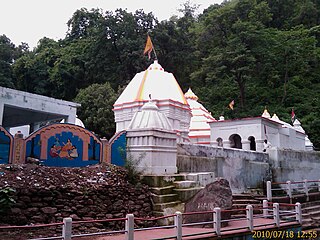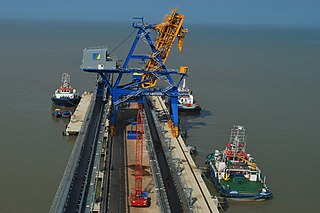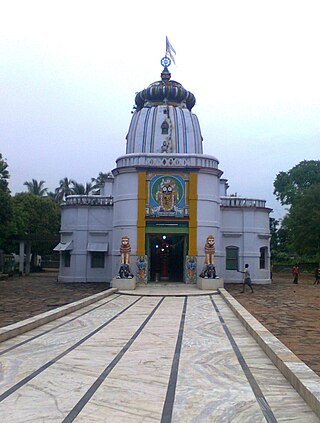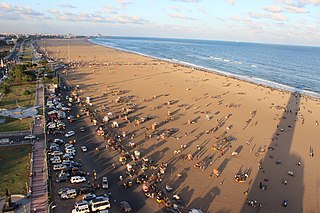
Baripada is a city and a municipality in Mayurbhanj district in the state of Odisha, India. Located along the east bank of the Budhabalanga river, Baripada is the cultural centre of north Odisha. In recent years, it has emerged as an educational hub with the opening of numerous professional colleges.
Bargarh is an emerging city and municipality in Bargarh district in the state of odisha in India. It is the administrative headquarters of Bargarh District. Bargarh is popularly known for intensive cultivation of 'paddy', therefore called "Bhata Handi" of Odisha.

Balangir District, also called Bolangir District, is a district situated in Odisha state of India. The district has an area of 6,575 km2 (2,539 sq mi), and a population of 1,648,997. The town of Balangir is the district headquarters. The composition of the land is predominantly rural. Other important big & small towns in Balangir district are Titlagarh, Patnagarh, Kantabanji, Loisingha, Saintala, Belpada, Tushra, Agalpur, Deogaon, Chudapali, Biripali, Bhalumunda, Bangomunda, Sindhekela, Turekela and Muribahal.

Bhadrak is a city of Odisha state in eastern India. The city is the district headquarters of Bhadrak district. According to legend, the city derives its name from the Goddess Bhadrakali, whose temple is on the banks of the Salandi River.

Balangir also known as Bolangir, is a city and municipality, the headquarters of Balangir district in the state of Odisha, India. Balangir has one of the best cultural heritage in India. It is also known as one of the finest places for tourists in Odisha. Balangir municipality is divided into twenty-one wards. It is spread over an area of 12,200 acres (4,900 ha).

Nayagarh is both a town and the municipality headquarters of the Nayagarh district in the Indian state of Odisha.
Sambalpur is the fifth largest city in the Indian State of Odisha. It is located on the banks of river Mahanadi, with a population of 335,761. Prehistoric settlements have been recorded there. It is the home of the Sambalpuri sari.
Upper Bagh Devi Temple is an ancient shrine at Kulada, Ganjam District in the state of Odisha in India. The temple is about 8 km from Bhanjanagar, 102 km from Chhatrapur and 140 km from Bhubaneswar. The nearest railway station is at Berhampur, 88 km away.

The Maa Sarala Temple is a Hindu temple in the district of Jagatsinghpur, Odisha, India. It is one of the eight most famous Shakta shrines of Odisha.

Mahavinayak Temple is a major pilgrimage center in Chandikhole in Jajpur district in the Indian state of Odisha. It is one of the oldest Ganesha temples in the state. Five gods - Shiva, Vishnu, Durga, Sun and Ganesha - are worshiped as one deity in a single Garbhagriha or sanctum sanctorum there.

Patna State was a princely state in the Eastern States Agency of India during the British Raj. It had its capital at Balangir. Its area was 6,503 km2 (2,511 sq mi).
Tourism in Odisha is one of the main contributors to the economy of Odisha, India, with a 500 km (310 mi) long coastline, mountains, lakes, natural biodiversity and rivers. Odisha is a major tourist destination in India, with various tourist attractions, including wildlife reserves, beaches, temples, monuments, the arts and festivals. Other than wildlife reserves, beaches, temples, monuments, the arts and festivals, the Odisha Tourism Development Corporation, a public sector undertaking of the Government of Odisha, is also developing the tourism sector of Odisha and India.

Tamil Nadu has the largest tourism industry in India with a percentage share of 21.31% and 21.86% of domestic and foreign tourist visits in the country. According to the 2020 Ministry of Tourism report, the number of domestic arrivals was at 494.8 million making the state the second most popular tourist destination in the country, and foreign arrivals numbered 6.86 million, the highest in the country, making it the most popular state for tourism in the country.

Gandhamardan Hills or Gandhamardan Parbat is a hill located in between Balangir and Bargarh district of Odisha, India. This hill is well known for medicinal plants. There is a Bauxite reserve which is planned for exploration by the state government through a private venture. Lord Parshuram is believed to reside here.

Sri Lakshmi Varaha Swamy Temple is a 500-year-old Indian temple dedicated to Varaha, the boar incarnation of Vishnu.

Sri Nrusinghanatha, is a temple of Odisha, India, situated at the foothills of Gandhamardhan hills near Paikmal, Bargarh. The King of Patna, Baijal Singh Dev laid the foundation of this historic temple in early 15th century CE. It is only 45 feet in height, divided into two parts: the first being the seat of the Lord Nrusinghnath, the second allotted to Jagamohan (antechamber having 3 gates and each supported by 4 pillars.
Odisha, is an eastern Indian state on the Bay of Bengal. It is known for its tribal cultures and its many ancient Hindu temples. During the ancient times, many small kingdoms existed now known as Western Odisha, which was ruled by local chieftains.Western Odisha, or the western part of Odisha, India, extends from the Bolangir district in the south to the Sundargarh district in the north.
Patora dam is located in Odisha. It is constructed across Jonk River in Patora village located 18 km from Nuapada in Nuapada district, Odisha in India.
Bhandarpuri is a village in Bargarh district in the Indian state of Odisha.














